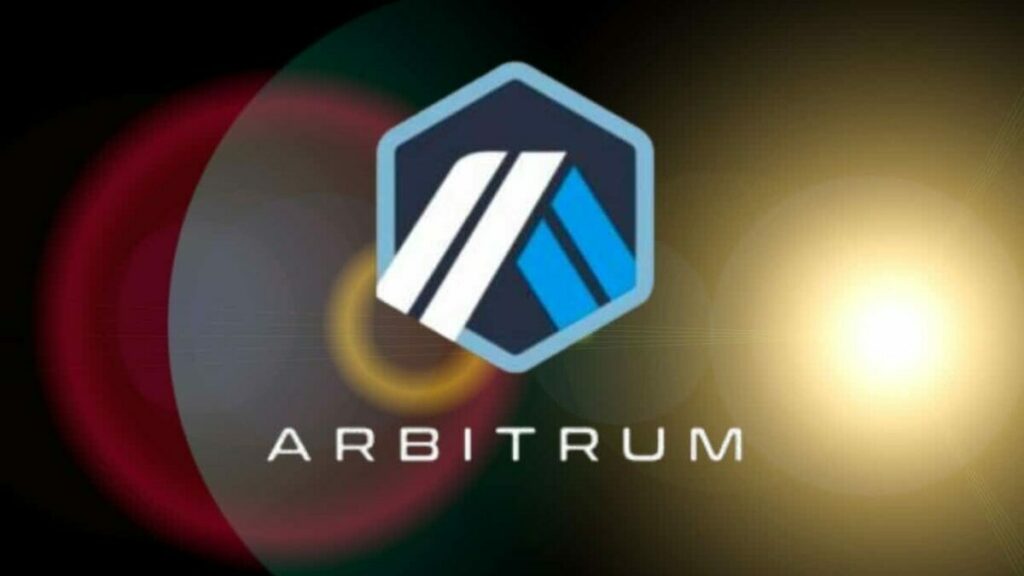Arbitrum, an Ethereum scaling solution designed by Offchain Labs, is proving to be one of the most important factors for the growth of Ethereum blockchain. Why? Let us delve deeper to have a better understanding of this roll-up technology.
The high transaction fees on Ethereum have deterred the growth of the Ethereum blockchain. Although it is home to a thriving decentralized finance (DeFi) industry, the ETH blockchain has been plagued with several issues such as, speed, scalability and expensive to use.
Transactions on Ethereum (ETH) are executed via smart contracts that require a certain fee to reward the network participants that store such programmable contracts on their machines. This transaction fee tends to shoot up as the number of users grows. Furthermore, as the number of transactions increases, the network faces a recurring issue of congestion.
Why Choose Arbitrum?
Without scalability, developers are also limited by what the network can do and how many transactions it can process. Therefore, in order to make the network more scalable, Ethereum scaling solutions such as Arbitrum are used. Arbitrum has been designed to reduce the costs and latency of decentralized applications (dApps) for both users and developers. It facilitates more transaction volume on the Ethereum blockchain network at a lower cost enabling developers to quickly, easily, and securely deploy the applications.
Arbitrum is a layer 2 solution that uses a variation of one of Ethereum’s popular scaling solutions, known as an “Optimistic rollup”. The Arbitrum Rollup protocol minimizes the amount of data used on-chain and supports arbitrary Ethereum Virtual Machine (EVM) smart contracts using common Ethereum tooling.
Moreover, Arbitrum smart contracts can use any Ethereum-based token and anyone can be elected to validate without the need for custom tooling. Offchain Labs has claimed the network does not need one, since all transactions on the sidechain are settled with ETH, the native cryptocurrency of the Ethereum blockchain.
How Does it Work?

This layer 2 scaling solution is an advanced Optimistic Rollup that stores very little data on-chain for optimal scalability. Arbitrum is built on the Ethereum network and allows for up to 4,500 transactions per second (TPS). It follows the off-chain Optimistic protocol managed by a contract on the Ethereum chain. In a nutshell, it works by validating transactions off-chain before sending confirmation back to the blockchain.
For the uninitiated, an ‘optimistic’ rollup is a specific technique for rolling up transactions in order to speed things up. Optimistic rollups assume that the transactions contained within the rollup are valid. Arbitrum’s optimistic rollups are settled on a proprietary sidechain.
A sidechain is a blockchain that is connected to a main chain. Arbitrum collects batches of transactions, settles them on its sidechain, and then feeds the transaction data back to the Ethereum blockchain ledger.
On the other hand, Arbitrum is the most Ethereum Virtual Machine (EVM) smart contract compatible out of all the Layer 2 solutions. It mans that Ethereum DeFi developers can integrate their decentralized applications (dapps) with Arbitrum without having to make any modifications.

According to a development document, if a user wants an Arbitrum chain to process a transaction he needs to put that transaction into the chain’s inbox. Then the chain will see the transaction, execute it, and produce some outputs: a transaction receipt, and any withdrawals the user had initiated.
The Basic Architecture of Arbitrum

The Arbitrum ecosystem consists of four essential parts that can be used for various purposes. The verifiers, keys, virtual machines, and managers are the main players in this process. The Verifier is a universal entity or distributed protocol that examines the validity of transactions and handles the dissemination of accepted transactions.
The Key is the protocol member who can handle money and initiate transactions. The public key’s hash is an identification mark users can rely. By signing them with the transaction’s private keys, the key also aids in proposing transactions.
Going further, the Virtual Machine (VM) in Arbitrum, is the protocol’s virtual participant containing the necessary data and code for specifying the actions of the virtual machine. While a Manager is the person managing the virtual machine and is accountable for keeping tabs on its development. The manager also makes certain that the VM functions in line with expectations.
Since the launch of Arbitrum in August 2021, several high profile DeFi projects have started using the technology. Sushiswap, Curve, Synapse, AnySwap, and Abracadabra are notable projects using Arbitrum. Moreover, Uniswap has polled governance token owners to determine their preferences for porting the DEX to Arbitrum One.
Arbitrum Use Cases Skyrockets
🔥 THE TVL BETWEEN TOP LAYER 2 ON ETHEREUM 🔥
By overcoming #Polygon and #Optimism, @arbitrum has naturally risen to the top 1 Layer 2 in TVL through 2022.
Do you think @arbitrum will become the new home of DeFi. (💙,🧡)? Let's comment below 👇#Arbitrum #DeFi pic.twitter.com/AAtP0g8e2V
— Arbitrum Space (💙,🧡) (@Arbitrum_Space) January 1, 2023
Arbitrum has witnessed a dramatic upsurge in transactions over the past few months. According to Dune Analytics, Ethereum Layer-2 networks such as Arbitrum and Optimism have surpassed Ethereum in combined transaction volume. The report shows Ethereum processed over 1.06 million transactions on Jan. 10, whereas Arbitrum and Optimism combined processed over 1.12 million transactions.
Meanwhile, Arbitrum One, which was designed for DeFi and NFT projects remain the market leader in terms of total value locked (TVL) with around $2.34 billion in collateral, giving it a 52.5% market share.
We’re excited to now support Arbitrum Nova!@Arbitrum's chain dedicated to social and gaming!🎮
We’re also strengthening Nova’s ecosystem by joining the Data Availability Committee (DAC) to provide access to on-chain data and help ensure data accuracy 🤝 pic.twitter.com/Zio4pkDWaw
— OpenSea (@opensea) January 6, 2023
In 2022, Off-chain Labs launched Arbitrum Nova (“Nova”), which is the second chain launched in the Arbitrum ecosystem and is designed to serve as the premier solution for Web3 gaming and social applications. It is an entirely new chain built on Arbitrum’s AnyTrust technology, which is optimized for ultra-low-cost transactions with strong security features.
On January 7, NFT giant, OpenSea announced support for Arbitrum Nova allowing users to access Nova as a cheaper option to Ethereum when buying or selling NFTs.
#Chainlink Automation is live on @arbitrum mainnet!#Arbitrum developers can now build fully automated applications that are decentralized end to end.
See how Automation is already increasing the performance and reliability of highly scalable dApps 🧵⬇️https://t.co/4D1UosPyoA pic.twitter.com/IlkIqx6Y4e
— Chainlink (@chainlink) December 16, 2022
Last month, Chainlink, one of the leading oracle services providers and Arbitrum announced the launch of Chainlink Automation on Arbitrum One. It will allow developers to access reliable and performant automation needed to build advanced dApps by leveraging a decentralized network of nodes. Several experts predict that Arbitrum being the most advanced L2 platform, will hopefully continue to absorb the current technology trends to scale the platform and promote its expansion.











